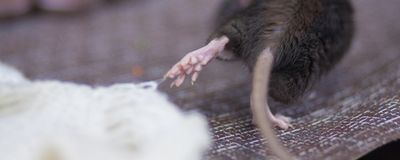Login
SubscribeParkinson's disease
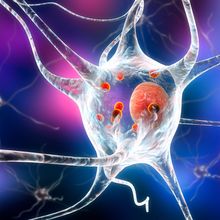
The Bigger Protein Picture of Designing Parkinson’s Therapeutics
Deanna MacNeil, PhD | Feb 13, 2023 | 3 min read
Researchers highlight protein structure considerations for designing inhibitors that target familial Parkinson’s disease mutations.
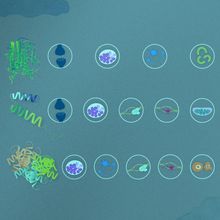
Infographic: Secret Lives of Neurodegeneration-Linked Proteins
Catherine Offord | Aug 1, 2022 | 5 min read
Maligned peptides such as the Alzheimer’s-associated amyloid precursor protein may have critical roles in the healthy brain.
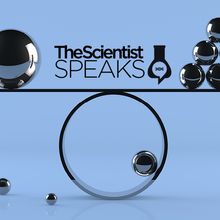
Immune Cells and ALS: A Balance Between Life and Death
The Scientist’s Creative Services Team | 1 min read
Understanding the role of immune cells in neurodegeneration may help scientists develop new diagnostic, prognostic, and treatment tools.
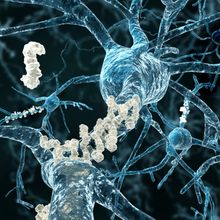
The Misunderstood Proteins of Neurodegeneration
Catherine Offord | Aug 1, 2022 | 10+ min read
The normal functions of peptides that aggregate in Alzheimer’s, Parkinson’s, and Huntington’s have been largely overlooked by scientists, but some argue that they are critical for understanding the development of disease.
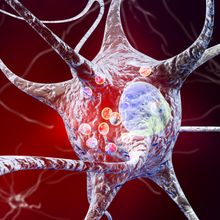
Experimental Pill to Treat Parkinson’s Is Safe, Trial Finds
Andy Carstens | Jun 10, 2022 | 2 min read
Testing in animals and lab-grown cells suggests the experimental drug could enhance the function of lysosomes within cells.
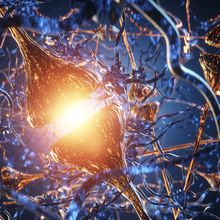
Autophagy and Mitophagy in Neurodegeneration: A Deep Dive
The Scientist’s Creative Services Team and PerkinElmer | 1 min read
Robin Ketteler and Hélène Plun-Favreau discuss the importance of autophagy and mitophagy regulation in neurodegenerative diseases.
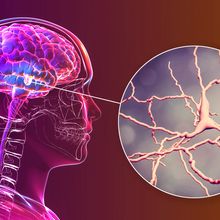
Specific Brain Cells Linked to Parkinson’s Disease
Dan Robitzski | May 6, 2022 | 2 min read
Research identifies 10 types of dopamine-making neurons, one of which seems to die off during the disease.
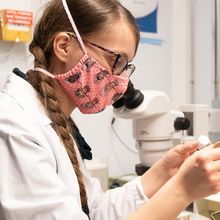
Ana Marija Jakšić Shapes Fruit Fly Brains
Chloe Tenn | Apr 18, 2022 | 3 min read
The Swiss Federal Institute of Technology Lausanne evolutionary neurobiologist is using Drosophila to investigate how organisms adapt to novel environments.

Scientific Breakthroughs with Cryogenic Electron Microscopy
The Scientist’s Creative Services Team and Thermo Fisher Scientific | 1 min read
Structures made via cryo-EM give researchers insights into SARS-CoV-2, HIV, neurological disorders, cancer, and more.

Neuropathologist John Trojanowski Dies at 75
Lisa Winter | Mar 18, 2022 | 2 min read
His work was pivotal to understanding the mechanisms of neurodegenerative diseases, particularly Alzheimer’s and Parkinson’s.
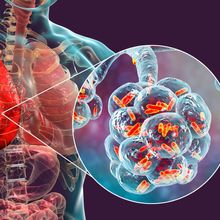
Bacteria in the Lungs Can Regulate Autoimmunity in Rat Brains
Dan Robitzski | Mar 17, 2022 | 4 min read
Making specific alterations to the bacterial population in a rat’s lungs either better protects the animals against multiple sclerosis–like symptoms or makes them more vulnerable, a study finds—the first demonstration of a lung-brain axis.

How Infectious Diseases Affect the Brain
The Scientist’s Creative Services Team | 1 min read
From a loss of taste to dementia, infectious agents cause an array of neurological symptoms.

Stem Cell Transplant Treats Parkinson’s Disease in Monkeys
Roni Dengler, PhD | Feb 7, 2022 | 4 min read
Personalized stem cells improved motor symptoms and depression signs in monkeys modeling Parkinson’s disease, paving the way for trials in human patients.
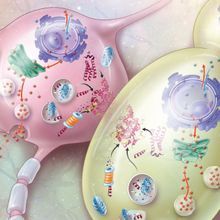
Infographic: Modeling Neurodegenerative Diseases with Yeast
Mahlon Collins | Oct 1, 2021 | 3 min read
Conservation of structures and functions between single-celled fungi and human cells allow researchers to probe the brain.

The Scientist Speaks Ep. 16 - At the Breaking Point: Mitochondrial Deletions and the Brain
The Scientist’s Creative Services Team | 1 min read
Researchers characterize large mitochondrial deletions to understand their implications in neurological disorders.

Contributors
The Scientist Staff | Oct 1, 2021 | 3 min read
Meet some of the people featured in the October 2021 issue of The Scientist.
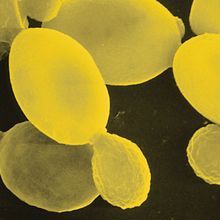
Yeast Models Provide New Insights into Neurodegenerative Diseases
Mahlon Collins | Oct 1, 2021 | 10+ min read
The single-celled fungus allows researchers to study Alzheimer’s, Parkinson’s, ALS and other brain diseases with unparalleled speed and scale.

Breaking Down Barriers
The Scientist’s Creative Services Team | 1 min read
Looking at the future of neurodegeneration research!

Astrocyte-to-Neuron Method Reverses Neurodegeneration in Mice
Ruth Williams | Jun 24, 2020 | 4 min read
The cell conversion strategy restores neurons and motor functions lost as a result of an induced Parkinson’s-like illness in the animals.
